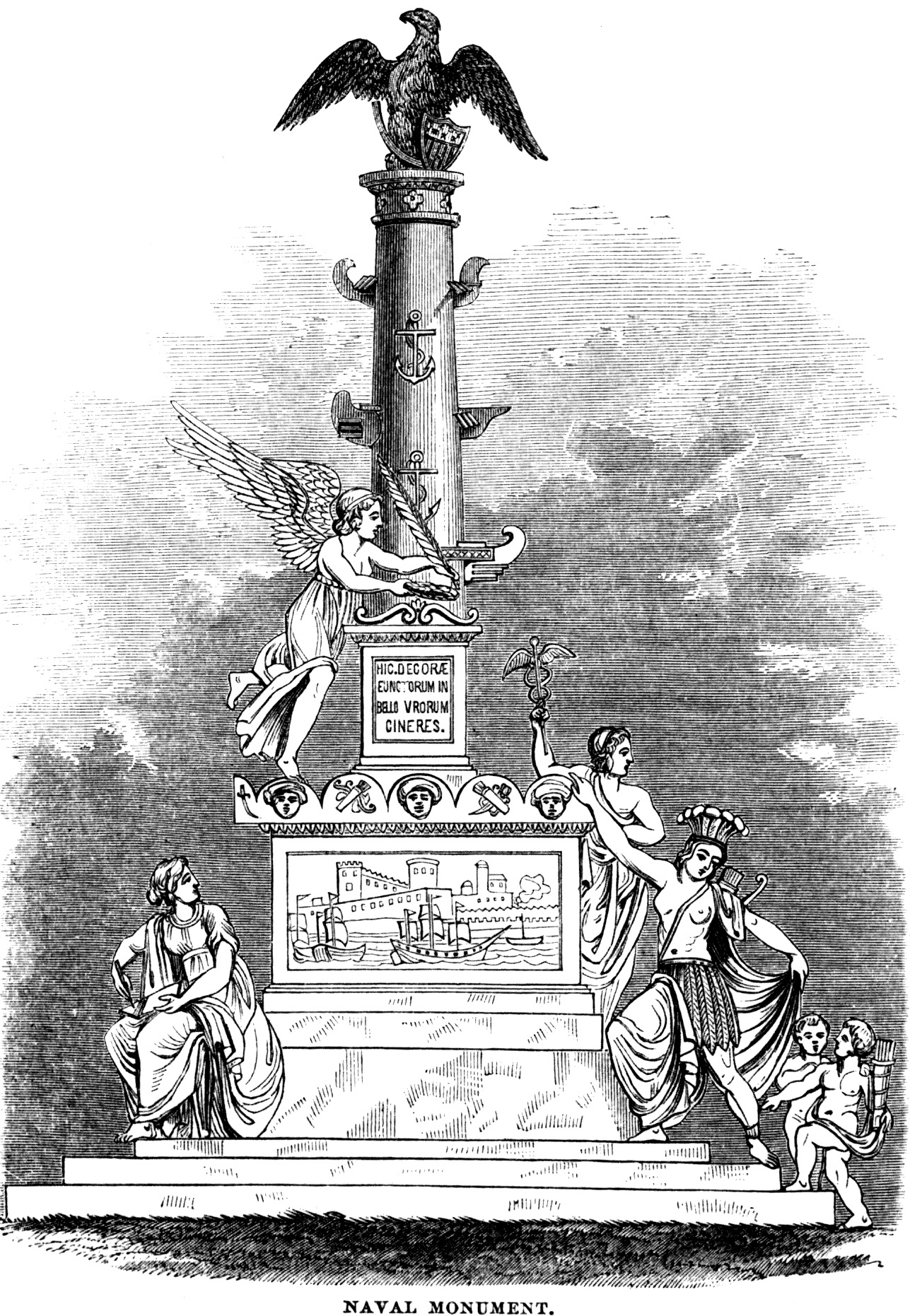The Tripoli Monument
by Benson J. Lossing

The picture represents the monument as it appeared when first erected. It is of white marble, and with its present pedestal (not seen in the engraving) is about forty feet in height. It was mutilated when the navy yard at Washington was burned in 1814. It was afterward repaired, and removed to the west front of the Capitol in Washington, where it was placed upon a spacious brown-stone base in an oval reservoir of water. The monument, with this base, was removed to Annapolis, in Maryland, in 1860, and set up there in the grounds of the Naval Academy. In consequence of the Great Rebellion, in 1861, that academy was removed to Newport, Rhode Island. The monument was left. “It is situated” wrote Mr. William Yorke Atlee to the author in January, 1862, “on a hill in the northwestern portion of the naval school grounds. It is in a state of good preservation, and adds not a little to the beauty of the grounds.”
The shaft is surmounted by the American eagle, bearing the shield. On its sides the representations of the bows of vessels are seen projecting, and by its pedestal is an allegorical figure of Fame in the attitude of alighting, with a coronal of leaves in one hand and a pen in the other. The form of the pedestal has been altered. On one side of the base, in relief, is a view of Tripoli and the American squadron; on the other the names of the heroes in whose memory the monument was erected. On three sides of the base are statues representing Mercury (Commerce), History, and America, the latter in the form of an Indian girl with a feather head-dress, half nude, and two children near. On the brown sandstone sub-base on which this monument now stands are the following inscriptions upon three sides.
1. “Erected to the memory of Captain Richard Somers, Lieutenants James Caldwell, James Decatur, Henry Wadsworth, Joseph Israel, and John Dorsey, who fell in the different attacks made on the city of Tripoli in the year of our Lord 1804, and in the twenty-eighth year of the independence of the United States.”
2. “The love of country inspired them. Fame has crowned their deeds. History records the event. The Children of Columbia admire, and Commerce laments their fall.”
3. “As a small tribute of respect to their memory, and admiration of their valor, so worthy of imitation, their brother officers have erected this monument.”
The same illustration appears in Harper's Monthly Jan. 1862.